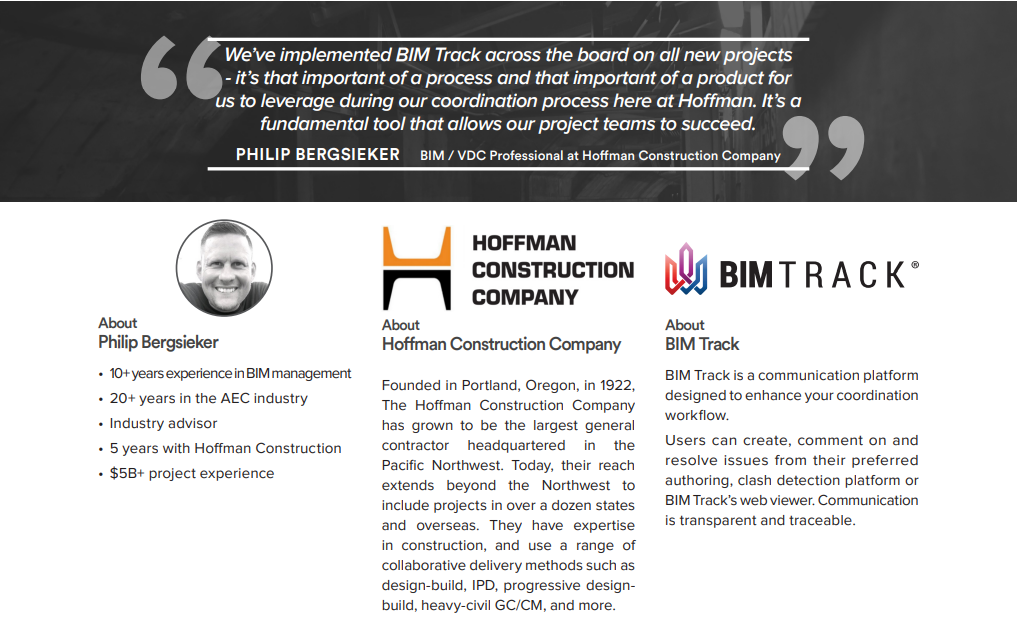Sound Transit’s ongoing expansion of Seattle’s light rail service consists of a number of different extensions due to be completed in 2023. Hoffman, Kiewit, and Stacy and Witbeck partnered on a number of these extensions as joint ventures. The project also features the world’s first light rail traveling on a floating bridge between Mercer Island and Judkins Park stations.
Hoffman Construction along with their JV partners, Kiewit & Stacy and Witbeck, were contracted to build new expansions in the E130, E360, and L200 corridors. The work consists of main track alignments with multiple stations and garages associated with each expansion. For the E130 and E360 projects Hoffman partnered with Kiewit and the L200 project Hoffman partnered with Kiewit, & Stacy and Witbeck. Hoffman Construction focused on building and coordinating the stations and garages scope while JV partners managed alignment work.
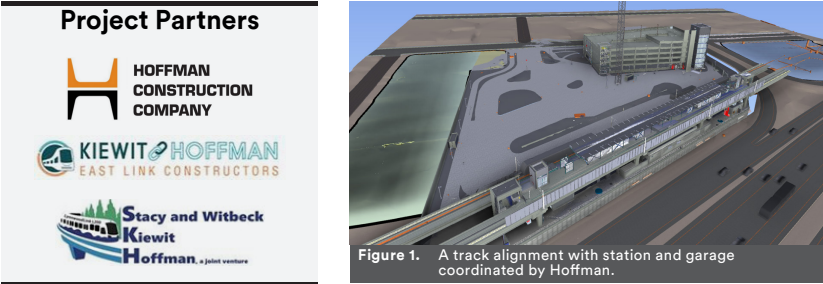
Hoffman Construction along with their JV partners, Kiewit & Stacy and Witbeck, were contracted to build new expansions in the E130, E360, and L200 corridors. The work consists of main track alignments with multiple stations and garages associated with each expansion. For the E130 and E360 projects Hoffman partnered with Kiewit and the L200 project Hoffman partnered with Kiewit, & Stacy and Witbeck. Hoffman Construction focused on building and coordinating the stations and garages scope while JV partners managed alignment work.
Hoffman Construction and JV Partners were challenged with managing multiple scopes of work that were segregated into bid packages that streamlined construction. The result was a complex network of stakeholders and work that needed to be coordinated while managing issues associated with the various trade partners that included complex light rail infrastructure and building components.
The project involved a highly collaborative process where Hoffman Construction had to ensure a smooth hand-over to the trade coming after for the next construction phase, and with other engineers to inform future decision-making on other stations and garages.
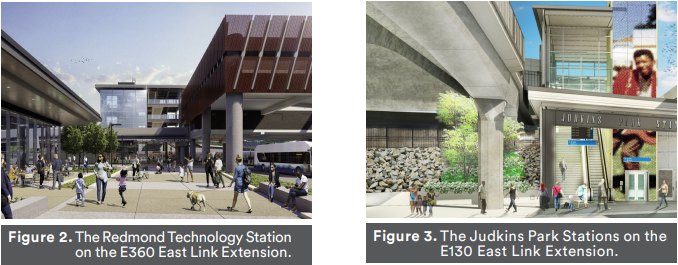
On the E360 extension, the design was happening during building on this project, in a lean process designed to accommodate an expansion project on this scale within a tight schedule. The coordination process was informed by the construction schedule, working backwards from key construction milestones to determine and align the coordination deadlines.
By treating the BIM coordination process as a submittal-like deliverable, it allowed Hoffman Construction and JV partners to key in on the overall completeness of the coordination effort, enabling the JV to access archived buy-in from the trade partners to support quality installations and excellent supplemental record documents derived from the BIM coordination efforts.

Implementing BIM Track early to solve important communication challenges allowed Hoffman and the JV partnerships to support the project team stakeholders appropriately. With each new rail expansion project, incremental improvements were incorporated to streamline the process. When working with their trade partners and the integrations offered by BIM Track that allowed access to resolve issues directly in authoring platforms like Revit, AutoCAD, and Tekla in addition to organized clashes within Navisworks they got on board quickly.
Here’s how Hoffman Construction used BIM Track to overcome their coordination challenges across the three expansions:
Hoffman Construction and their partners implemented BIM Track to simplify their communication, using it to share comments, questions, and get the answers needed, quickly. Over time, they used BIM Track even more effectively to focus their efforts on the most important coordination challenges, using the clashes to issues and viewpoints to clashes features and specifying issue priority.
Hoffman ensured effective collaboration with their trade partners by giving them the tools they needed to communicate with the project team. Making the decision to limit project management software to an integrated hub, they provided teams with a baseline ability to coordinate internally without continual intervention. They chose BIM 360 as an integrated data management platform, along with BIM Track to manage communication. BIM Track’s integrations with platforms like Revit, AutoCAD, and Tekla, and Navisworks meant that nobody’s workflow was interrupted and issues could be tracked across team members.

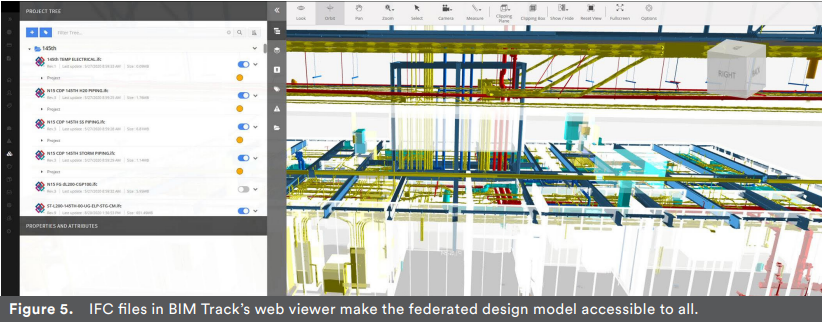

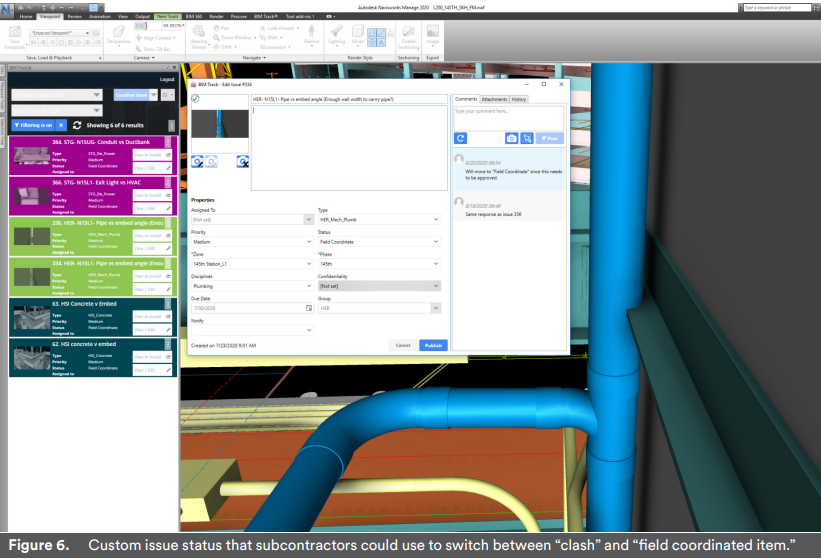
The overlapping coordination/construction schedule really showcases the importance of the pre-construction process to inform installation during construction. By working with the project superintendents the team was able to create an IFF (Issued For Fabrication) schedule aligned with the construction schedule that supported submittal reviews and fabrication times which in turn fed into actual construction activities.
Hoffman used a single BIM Track project to manage the entire alignment, with all the sub-projects contained within the construction program. BIM Track’s centralized platform allowed the project manager to maintain oversight and track cross-project metrics.
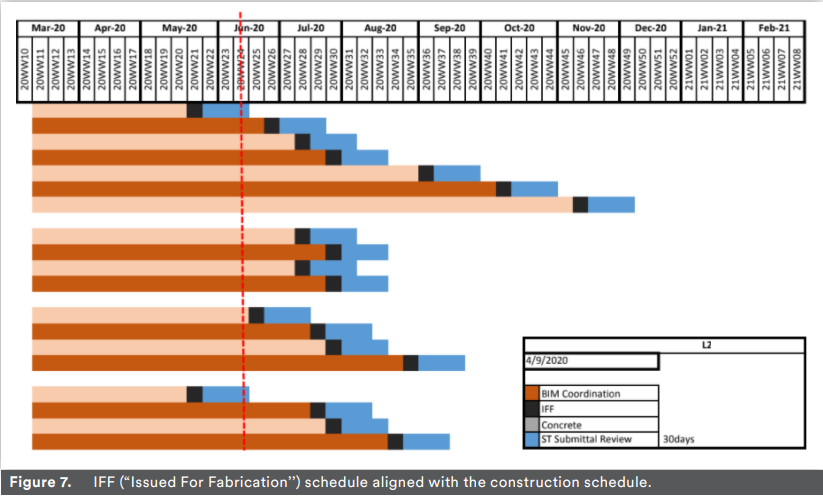

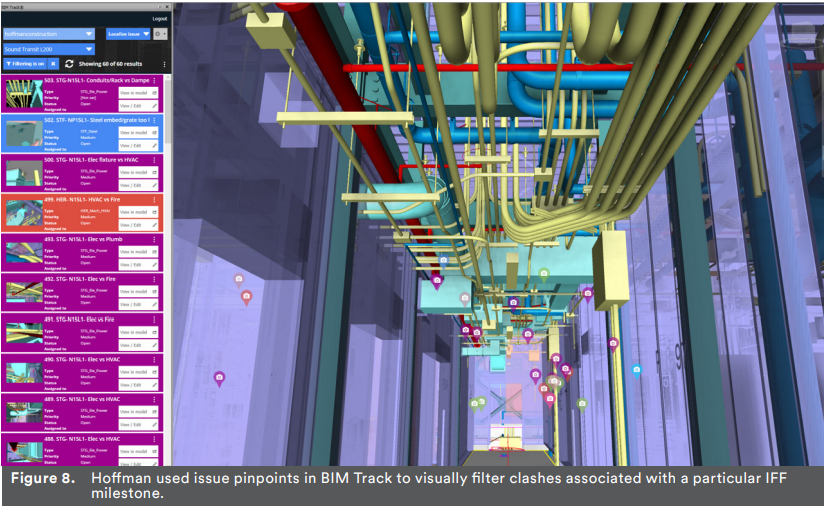
To promote collaboration, trade partners were full participants in the BIM process, contributing their scope of work to the federated model. By treating the BIM coordination process as a submittal-like deliverable, it allowed Hoffman Construction and JV partners to key in on the overall
completeness of the coordination effort, enabling the JV to access archived buy-in from the trade partners to support quality installations and excellent supplemental record documents derived from the BIM coordination efforts through model data.
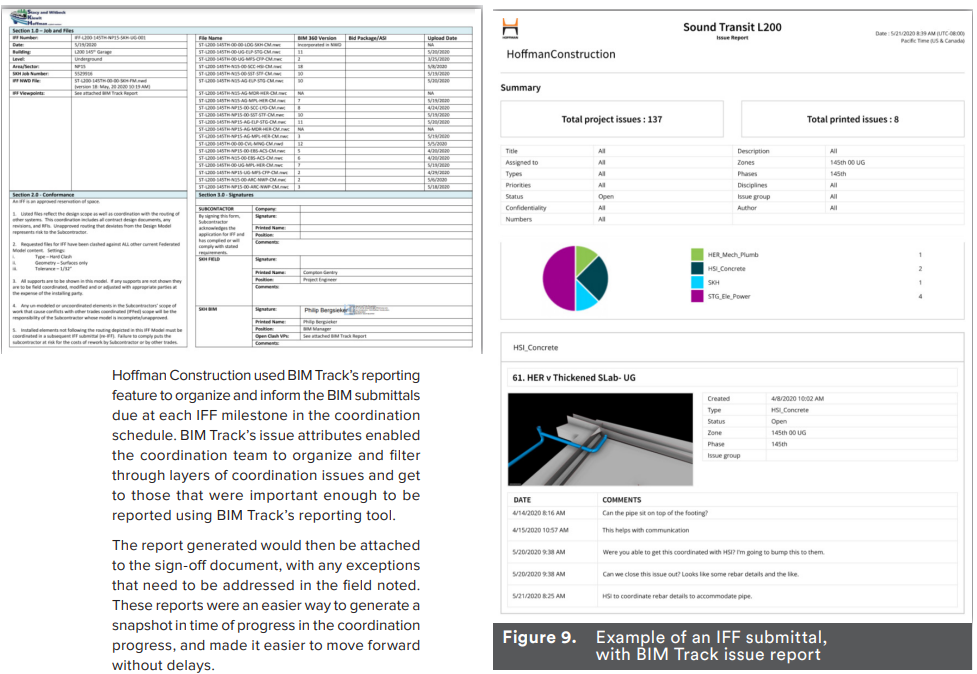
BIM Track’s issue dashboard and overall issue resolution progress tracking provides a level of transparency isn’t available otherwise.
Hoffman were able to hit tight deadlines and IFF milestones thanks to a streamlined BIM submittal process using BIM Track reports.
Hoffman were able to quickly filter information and find data they needed, even on previous alignments as all the issue metadata, and issue history was stored and easily accessible in BIM Track.
